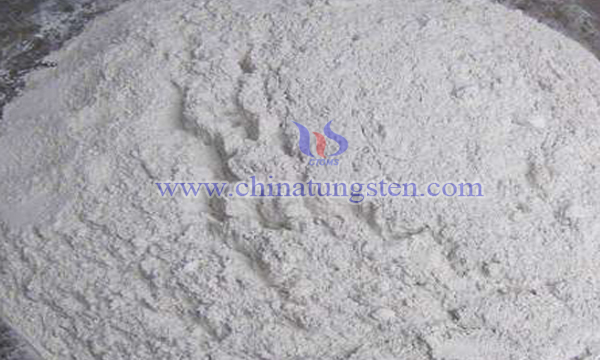Copper Phosphotungstate--Attapulgite Composite Oxidative Desulfurization Catalyst
- Details
- Category: Tungsten Information
- Published on Saturday, 20 April 2019 16:07
Oxygenated desulfurization (ODS) technology has mild operating conditions, high selectivity, and no need of hydrogen, which reduces operating costs. It has high desulfurization efficiency for benzothiophene compounds which are difficult to remove in catalytic hydrogenation, and can meet the requirements of ultra-deep desulfurization. It has good application prospects. Catalyst is a key factor in catalytic oxidation desulfurization. Catalysts for the oxidation of hydrogen peroxide are usually organic acids such as formic acid and acetic acid, heteropoly acids such as phosphotungstic acid, metal oxides, etc.

Recently, some scholars have reported the application of a copper phosphotungstate-attapulgite composite oxidative desulfurization catalyst in oxidative desulfurization. The desulfurization process can be summarized as the following steps:
1. Preparation of copper phosphotungstate-attapulgite clay catalyst.
Take 20 mL 0.1 mol/L sodium hydroxide solution and add 10 mL 0.1 mol/L copper nitrate to it. Blue flocculent precipitation occurs. Stir for 5 minutes to make the reaction complete. Copper hydroxide powders were obtained by washing them with deionized water for many times and then drying them in vacuum at 40 ℃ for 1 h. 0.2g cupric hydroxide powder was weighed and added into 10mL water to make it dispersed uniformly by ultrasonic vibration; 3.0g phosphotungstic acid was weighed and dissolved in 20mL water to prepare phosphotungstic acid solution; then phosphotungstic acid solution and 30mL 3g/10mL concave soil slurry were added to the uniform dispersion system while stirring, until the blue precipitation disappeared completely in the system, and the volume of mixed solution was 50mL-60mL, stirred at room temperature. Copper tungstate-attapulgite composite was prepared by mixing for 10 minutes and drying for 2 hours at 100 ℃.
2.0.1g catalyst was added to 50 mL simulated oil with sulfur content of 200 ppm, which was prepared by mixing 0.3g benzothiophene (BT) and 500 mL n-octane. 0.12mLH2O2 and 0.1g cetyltrimethylammonium bromide (CTAB) were added to the simulated oil. The reaction mixture was cooled to room temperature by magnetic stirring for 1 h in a constant temperature water bath at 40 ~℃. Adding 25mLN-N-dimethylmethylamine (DMF) and stirring for 5 minutes, the oil phase was separated by static stratification. The sulfur content was determined and the desulfurization rate was calculated to be 64.84%.
- Tungsten Oxide Manufacturer & Supplier, Chinatungsten Online: www.tungsten-oxide.com
- Tungsten News & Prices of China Tungsten Industry Association: www.ctia.com.cn
- Molybdenum News & Price: news.molybdenum.com.cn
- Tel.: 86 592 5129696; Fax: 86 592 5129797; Email: sales@chinatungsten.com



 sales@chinatungsten.com
sales@chinatungsten.com